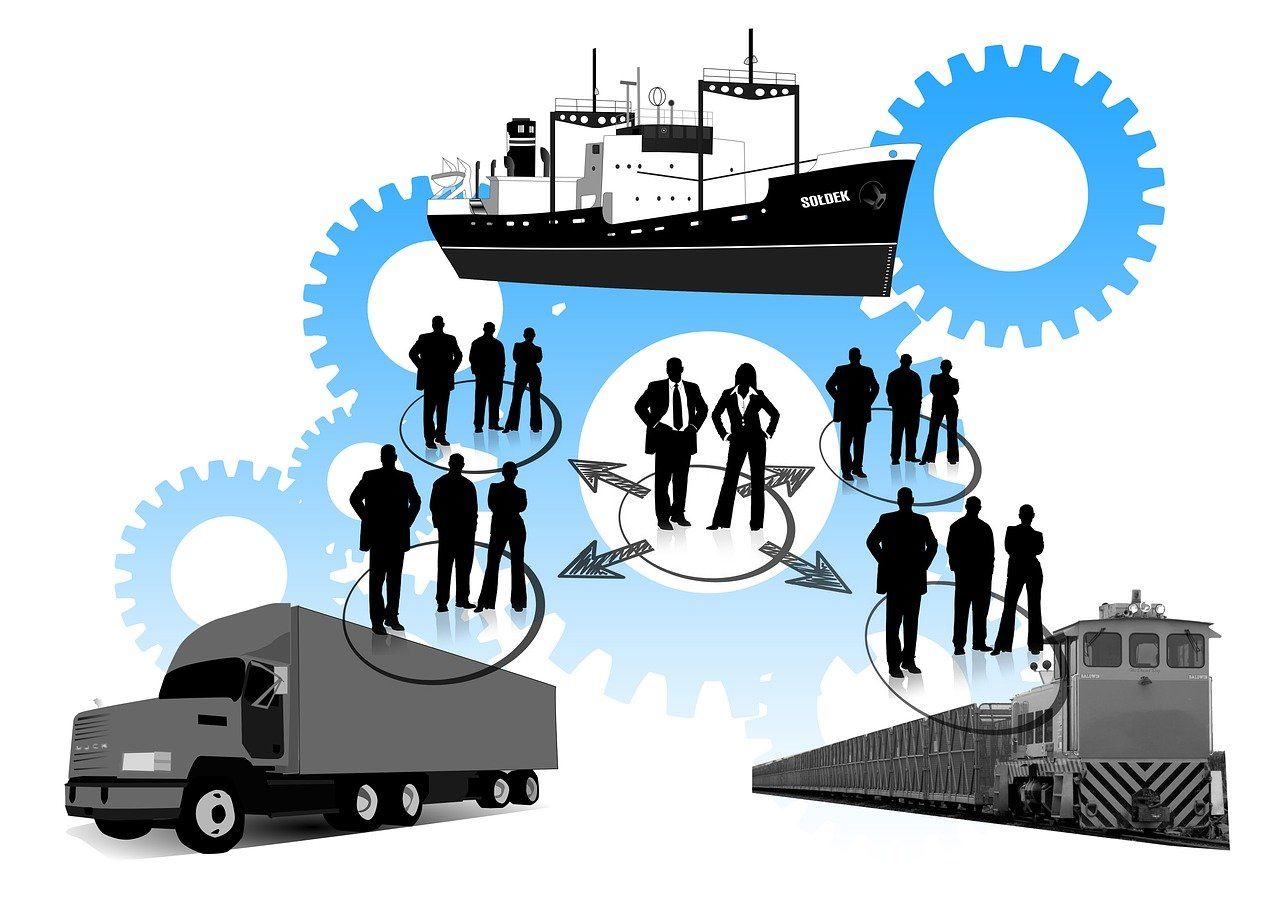Technology Integration in E-commerce Logistics
The integration of shipping logistics with inventory management systems represents a critical strategic approach for e-commerce businesses aiming to enhance operational efficiency and customer satisfaction.
This integration facilitates real-time visibility into both inventory levels and shipping operations, enabling more accurate forecasting, efficient order processing, and improved customer communication.
Here’s an in-depth look at the importance of this integration and its benefits.
Enhancing Real-Time Visibility
- Inventory Accuracy: Integrating shipping logistics with inventory management systems allows for real-time updates to inventory levels as orders are processed and shipped. This accuracy is crucial for preventing overselling and stockouts, ensuring that product availability information is always up-to-date.
- Order Tracking: Customers expect transparency and timely updates regarding their orders. Technology integration enables automatic updating of order status and tracking information, providing customers with real-time visibility from purchase to delivery.
Streamlining Order Fulfillment
- Automated Order Processing: Integration allows for the automation of order processing workflows, including picking, packing, and shipping. This automation reduces manual errors, speeds up order fulfillment, and enhances the overall efficiency of operations.
- Optimized Shipping Decisions: By having immediate access to inventory levels and locations, businesses can make informed shipping decisions, such as selecting the optimal warehouse for shipping based on the destination, stock availability, and shipping costs.
Improving Customer Satisfaction
- Faster Delivery Times: Efficient order processing and optimized shipping decisions lead to faster delivery times. Quick, reliable deliveries are a key factor in customer satisfaction and can significantly impact customer retention and loyalty.
- Accurate, Timely Communication: Integration ensures that customers receive accurate and timely information about their orders, including expected delivery dates and real-time tracking updates, enhancing the overall shopping experience.
Reducing Costs
- Inventory Carrying Costs: Improved inventory accuracy helps in maintaining optimal inventory levels, reducing the costs associated with overstocking or holding obsolete inventory.
- Shipping Costs: The ability to make informed shipping decisions can also lead to cost savings by selecting the most cost-effective shipping methods and carriers.
Best Practices for Technology Integration
- Choose Compatible Systems: Select inventory management and shipping logistics software that can seamlessly integrate with each other and with any existing systems, such as e-commerce platforms and customer relationship management (CRM) tools.
- Leverage Cloud-Based Solutions: Cloud-based systems offer scalability, flexibility, and accessibility, facilitating easier integration and real-time data sharing across different locations and devices.
- Continuous Monitoring and Updates: Regularly monitor the integration for any issues or inefficiencies and keep the systems updated to leverage new features and improvements that can enhance logistics operations.
- Training and Support: Ensure that staff are trained on the integrated systems and have access to ongoing support to address any challenges that arise during daily operations.
The integration of shipping logistics with inventory management systems is a cornerstone of modern e-commerce operations.
It not only enhances operational efficiency and real-time visibility but also significantly improves customer satisfaction through faster deliveries and better communication.
By adopting best practices for technology integration, online retailers can achieve a competitive edge in the rapidly evolving e-commerce landscape, driving growth and profitability.
Fulfillment Partnerships: Streamlining Logistics and Expanding Market Reach
For online retailers looking to optimize their logistics operations and tap into new markets, forming partnerships with Third-Party Logistics (3PL) providers or utilizing fulfillment networks offers a strategic solution.
These partnerships can significantly streamline shipping logistics, enhance customer satisfaction, and facilitate expansion into new geographical areas without the need for substantial upfront investments in infrastructure and technology.
Benefits of Fulfillment Partnerships
- Expertise and Efficiency: 3PL providers bring extensive logistics expertise and established infrastructure, enabling efficient handling of inventory management, order processing, and shipping. This expertise can lead to faster delivery times, improved order accuracy, and overall enhanced efficiency in logistics operations.
- Scalability: Partnering with 3PLs allows online retailers to easily scale their operations up or down based on current demand, without the constraints of fixed logistics capacities. This flexibility is particularly valuable for handling seasonal peaks or exploring new product lines.
- Cost Savings: Through economies of scale, 3PL providers can offer competitive shipping rates and reduced logistics costs. Additionally, by outsourcing logistics operations, retailers can convert fixed costs (such as warehouse leases and labor) into variable costs that align more closely with order volumes.
- Market Expansion: Fulfillment networks often have multiple distribution centers spread across different regions or countries, enabling retailers to store inventory closer to their customers. This proximity reduces shipping times and costs, making it easier for businesses to enter new markets and enhance customer satisfaction.
- Technology and Integration: Leading 3PL providers invest in advanced logistics technology, offering integrated solutions that provide real-time visibility into inventory levels, order status, and shipping tracking. Integration with an online retailer’s e-commerce platform streamlines the order fulfillment process and improves data accuracy.
Considerations for Successful Fulfillment Partnerships
- Alignment of Goals and Values: Choose a 3PL provider whose capabilities, goals, and values align with your business needs. Consider factors such as the provider’s experience with your product type, commitment to customer service, and technological capabilities.
- Communication and Collaboration: Effective communication is key to a successful partnership. Establish clear channels of communication and regular check-ins to discuss performance, challenges, and opportunities for improvement.
- Flexibility and Customization: Look for partners that offer flexible and customizable fulfillment solutions that can be tailored to your specific business requirements, including packaging, handling special items, and offering value-added services.
- Contract and Negotiation: Carefully review and negotiate the terms of the partnership, including pricing structure, service level agreements (SLAs), and scalability options. Ensure that the contract terms are mutually beneficial and support long-term collaboration.
- Performance Monitoring and Continuous Improvement: Implement metrics and KPIs to monitor the performance of your fulfillment partner regularly. Use this data to identify areas for improvement and work collaboratively on strategies to enhance logistics operations.
Forming partnerships with 3PL providers or utilizing fulfillment networks presents a strategic opportunity for online retailers to streamline their shipping logistics, reduce operational costs, and expand their market reach.
By leveraging the expertise, infrastructure, and technology of these partners, retailers can focus on core business activities, such as product development and customer engagement, driving growth and competitive advantage in the e-commerce sector.
Success Story: Optimizing Shipping Logistics for E-Commerce Growth
Background
Let’s examine the journey of “TechGadgets,” a fictional online retailer specializing in the latest electronic devices and accessories.
Facing challenges with rising shipping costs and extended delivery times that were impacting customer satisfaction and overall competitiveness, TechGadgets embarked on a strategic overhaul of its shipping logistics.
Challenges
- Rising Shipping Costs: As TechGadgets expanded its product range and customer base, shipping costs began to eat into profit margins.
- Extended Delivery Times: Customers expressed dissatisfaction with the inconsistent and often lengthy delivery times, especially during peak seasons.
- Operational Inefficiencies: The retailer’s existing logistics operations were fragmented, leading to inefficiencies in order processing, inventory management, and carrier selection.
Strategy Implementation
- Multi-Carrier Shipping Solutions: TechGadgets implemented a multi-carrier shipping solution that allowed for dynamic carrier selection based on cost, delivery time, and service type for each order. This approach enabled the retailer to optimize shipping rates and delivery times across a broader network of carriers.
- Zone Skipping Techniques: By consolidating orders destined for similar geographic areas and skipping intermediary carrier zones, TechGadgets significantly reduced shipping costs and shortened delivery times. This strategy was particularly effective for reaching customers in remote or less accessible regions.
- Warehouse Optimization: TechGadgets reevaluated its warehouse locations and decided to invest in strategically placed fulfillment centers. This allowed for inventory to be closer to key customer bases, reducing last-mile delivery times and costs.
- Technology Integration: The retailer integrated its e-commerce platform with advanced inventory and order management systems, providing real-time visibility into stock levels and streamlining the order fulfillment process. This integration also facilitated more accurate forecasting and inventory replenishment.
- Negotiated Carrier Agreements: Recognizing the value of long-term partnerships, TechGadgets negotiated preferential shipping rates and service level agreements with its primary carriers. These negotiations were based on projected shipping volumes and a commitment to mutual growth.
Outcomes
- Reduced Shipping Costs: Through strategic carrier selection, zone skipping, and negotiated rates, TechGadgets saw a significant reduction in shipping costs per order, improving profit margins.
- Improved Delivery Times: The implementation of strategic fulfillment centers and optimized carrier selection led to more consistent and faster delivery times, enhancing customer satisfaction.
- Operational Efficiency: The integration of advanced technology solutions streamlined the entire order fulfillment process, from inventory management to shipping, reducing operational overhead and improving efficiency.
- Increased Customer Satisfaction: With more reliable and faster deliveries, along with transparent tracking and communication, customer satisfaction and loyalty improved. This was reflected in positive reviews and an increase in repeat business.
Lessons Learned
- Continuous Optimization: The journey highlighted the importance of continually assessing and optimizing logistics strategies to adapt to changing business needs and market conditions.
- Partnership Value: Building strong relationships with carriers and technology providers can unlock significant value, including cost savings and operational improvements.
- Customer-Centric Approach: Keeping customer satisfaction at the forefront of logistics decisions can drive long-term success and growth for e-commerce retailers.
TechGadgets’ strategic overhaul of its shipping logistics demonstrates how online retailers can leverage multi-carrier strategies, technology integration, and operational optimization to reduce costs, improve delivery times, and enhance customer satisfaction.
This success story serves as a model for other e-commerce businesses facing similar logistics challenges, emphasizing the importance of adaptability, strategic partnerships, and a relentless focus on customer experience.
Challenge Overcome: Global Expansion through Strategic International Shipping
Background
“GlobalFashions,” a hypothetical online retailer specializing in unique fashion apparel and accessories, faced significant challenges as it sought to expand its market presence internationally.
Despite a strong domestic customer base, the retailer encountered hurdles with international shipping, including high costs, complex customs regulations, and extended delivery times, which impeded its global expansion efforts.
Challenges
- High Shipping Costs: International shipping rates were prohibitively expensive, affecting pricing competitiveness and profit margins.
- Customs and Regulatory Hurdles: Navigating the diverse customs regulations and import duties across different countries proved complex and time-consuming.
- Long Delivery Times: Extended shipping times led to customer dissatisfaction and negatively impacted the brand’s reputation in new markets.
- Lack of Local Market Knowledge: Limited understanding of local market preferences and logistics infrastructures made it difficult to optimize shipping strategies.
Strategy Implementation
- Partnership with a Global 3PL Provider: GlobalFashions partnered with a Third-Party Logistics (3PL) provider experienced in international e-commerce logistics. This partnership provided access to the 3PL’s extensive global logistics network, expertise in customs clearance, and volume-based discounted shipping rates.
- Localized Fulfillment Centers: The retailer invested in localized fulfillment centers in key international markets through its 3PL partnership. This strategy significantly reduced last-mile delivery times and costs while ensuring compliance with local regulations.
- Dynamic Shipping and Customs Duties Calculator: GlobalFashions integrated a dynamic shipping and customs duties calculator into its e-commerce platform. This tool provided customers with transparent pricing, including all applicable shipping costs and duties at checkout, improving the customer shopping experience.
- Diversified Carrier Mix: By utilizing its 3PL’s carrier network, GlobalFashions adopted a diversified carrier strategy, allowing for dynamic carrier selection based on cost, delivery time, and service reliability for each destination.
- Market-Specific Strategies: The retailer conducted in-depth market research to understand local consumer preferences and delivery expectations. This research informed market-specific shipping options, promotional strategies, and product offerings.
Outcomes
- Reduced Shipping Costs and Improved Margins: The partnership with a 3PL and strategic use of localized fulfillment centers led to significant reductions in shipping costs, improving pricing competitiveness and profit margins in international markets.
- Streamlined Customs Processes: Leveraging the 3PL’s expertise in customs and regulatory compliance streamlined the customs clearance process, reducing delays and enhancing customer satisfaction.
- Faster Delivery Times: Localized fulfillment and optimized carrier selection resulted in faster delivery times, aligning with customer expectations and strengthening the brand’s reputation abroad.
- Increased International Sales: Transparent pricing, including customs duties, and improved delivery experiences, led to increased customer trust and a significant uptick in international sales.
Lessons Learned
- Strategic Partnerships are Key: Collaborating with experienced logistics partners can mitigate the complexities of international shipping and accelerate global expansion.
- Understand Local Markets: Tailoring strategies to fit local market dynamics is crucial for international success.
- Invest in Technology: Technology solutions that provide real-time shipping cost calculations, including duties and taxes, enhance transparency and customer trust.
GlobalFashions’ journey illustrates how online retailers can successfully navigate the challenges of international shipping to expand globally.
By forming strategic partnerships, investing in localized fulfillment solutions, and leveraging technology for transparency and efficiency, retailers can overcome logistical hurdles, satisfy customers, and capture growth opportunities in new markets.














